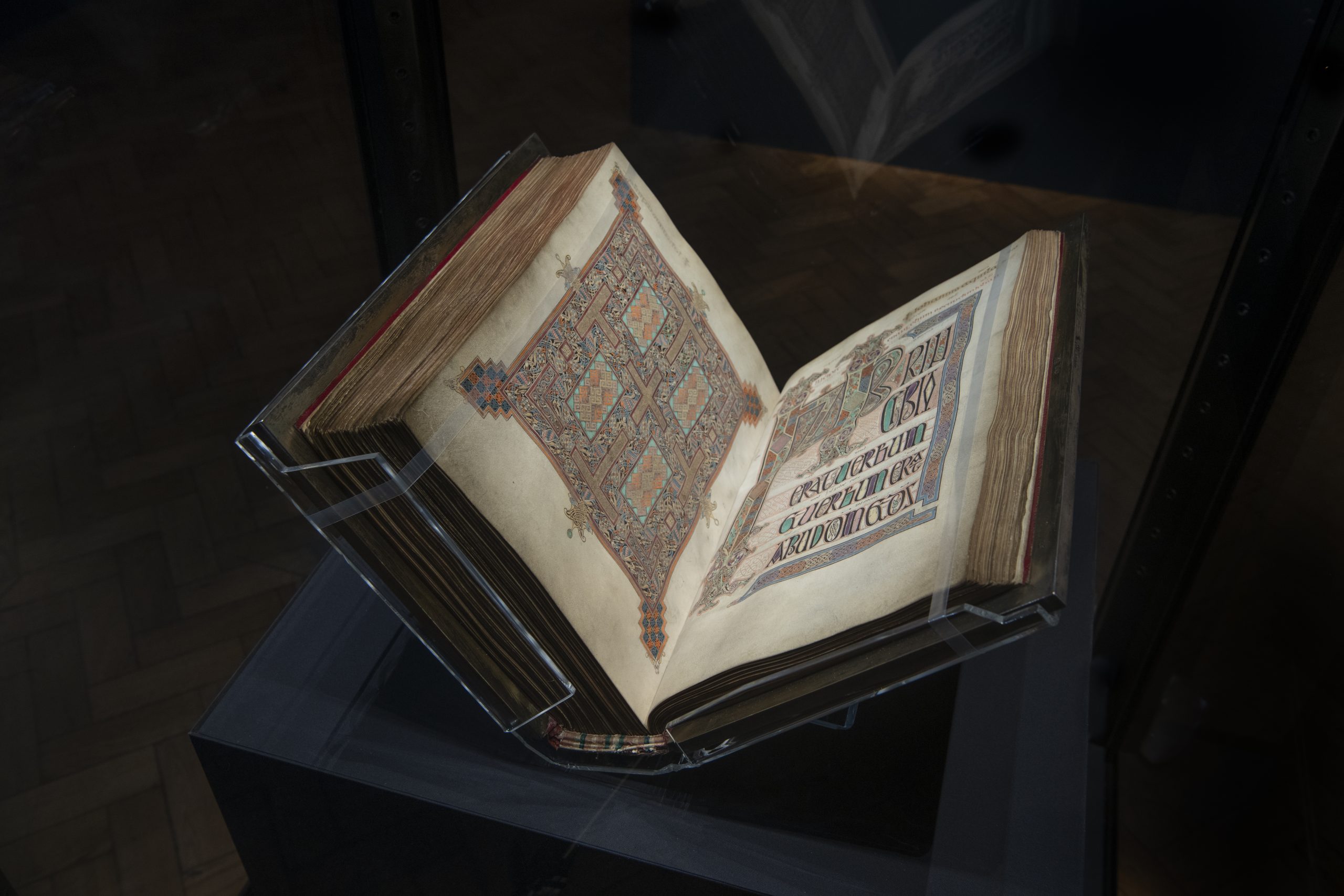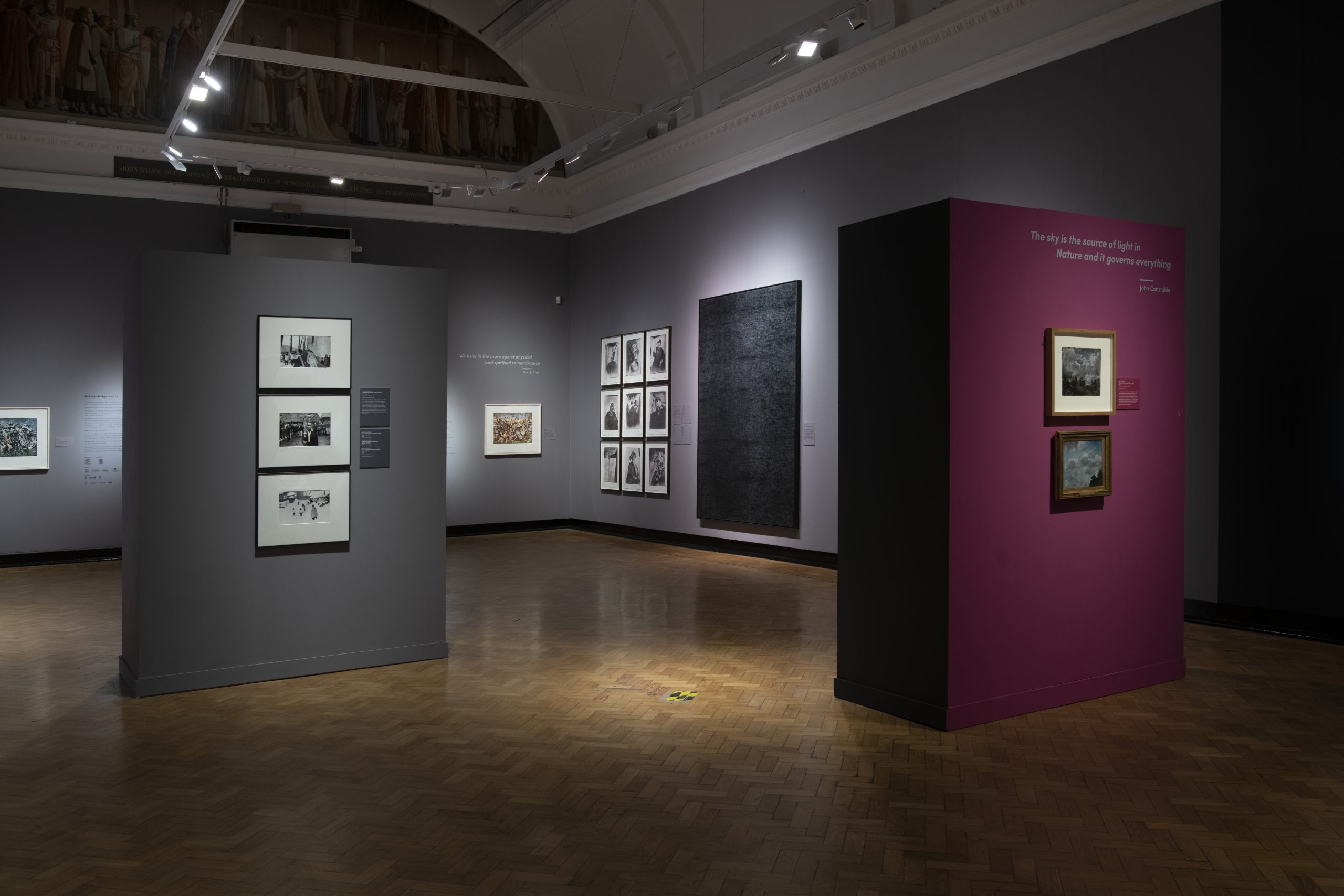What makes The Lindisfarne Gospels exhibition at the Laing Art Gallery different to how the Gospels are normally displayed and how they’ve been displayed in the North East previously?
We have taken a less traditional approach although we do still explore the Gospels important history in the context of 8th century Christianity. As an art gallery we wanted to do something creative in how we interpreted the Gospels, particularly what the Gospels mean in 21st century society. We asked questions about what it means to be human today and linked the concept of the sacred to personal lived experience. Two artists Jeremy Deller and Ruth Ewan were invited to work with us and as well as producing new work have influenced the exhibition programme overall.
Which page will the Gospels be open on in the exhibition, and why that page?
The manuscript is open at the page of St John. The cross carpet page and major initial introducing St Johns’ Gospel are the last major decoration in the Manuscript and demonstrate all the different elements of its creator’s different decorative designs and innovation. This is one of the most if not the most spectacular and beautiful. It is also special as the letter C on this page ends with a man’s head in profile with a long lock of yellow hair. Apart from the classical evangelist portraits it is the only human depiction in the whole manuscript. Scholars have speculated what this means – The Gospel of St John opens with in the beginning was the word where the word is identified with Christ and how the word was made flesh. Maybe literally Christ is represented as a word?
The display of the Gospels follows a strict conservation programme recommended by an international committee of experts. For example when on display at the British Library they turn the page every three months to show a different view and limit light, the showing at the Laing is also limited to three months. After the exhibition comes to an end this page will not be on display again for five years making it a very special opportunity indeed.
The exhibition is shown across three gallery spaces. What will happen in each one?
Ambitious in scale, the exhibition begins with a piece of digital interpretation by video design specialists Novak. This is a new kind of exhibition making for the gallery. NOVAK have used storytelling and images on the large scale gallery walls to immerse the visitor in the world and time of the Gospels. The book which is small in scale is monumental in terms of its significance and the gallery walls flow with images of Lindisfarne and the designs from the Gospels pages.. The visitor then enters the second gallery in which we show the actual Gospels placing them in the context of 8th century Christianity alongside twenty one other rare Anglo Saxon objects of the period. This is a quieter reverential space; the Inner Sanctum. The third gallery explores how art and spirituality have developed over the centuries, featuring artists from different cultural backgrounds and faiths. Works by historical artists Constable and Guido Reni are shown alongside contemporary artists Mariel Neudecker and Zarah Hussain, to name but a few.
There are also free accompanying displays inspired by the Gospels. These are Our Treasures, developed by artist Ruth Ewan, features precious objects belonging to people of the North East. The objects and their related stories were gathered when Ruth Ewan asked the question, ‘What do you treasure?’ through a series of workshops in libraries across the region, as well as a public open call throughout the spring. The objects on display are unique but in essence are symbols of precious memories and connections with a person or event of significance in people’s lives.
We also commissioned Turner Prize winning artist Jeremy Deller to produce a new film, The Deliverers, which explores the journey of the Lindisfarne Gospels in space and time from London to Newcastle upon Tyne.
How do you want audiences to respond to the exhibition? What stories did you want to tell?
We live in such strange times and we wanted to make visitors think differently about how the Gospels are relevant now and to people in the North East. The Gospels are a great achievement; an act of devotion and faith taking between five and ten years to complete. They are also a work of great artistry and beauty – a precious historical artefact. At 1300 years old they are remarkable in having survived wars and threat in almost pristine condition. The Gospels made in the North East are of national and international significance and provide us with the opportunity reflect on our history, what is important to us collectively and individually at a time when the world is facing so many challenges.
Lindisfarne Gospels
Laing Art Gallery
www.laingartgallery.org.uk


Photography by Colin Davison
October 13, 2022
- Arts & Culture

